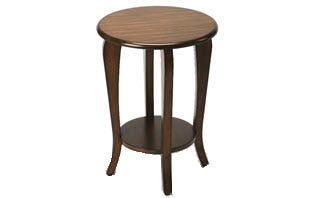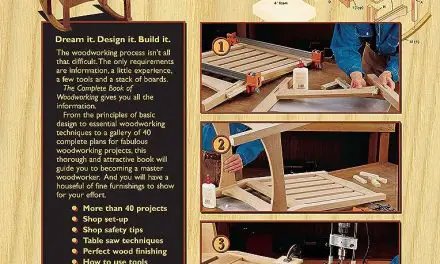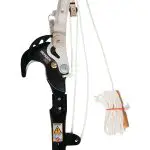To price woodworking accurately, calculate the cost of materials, labor, and overhead expenses, and add a desired profit margin. We will discuss the various factors to consider when pricing woodworking projects to ensure profitability and competitiveness in the market.
Woodworking is a highly skilled craft that requires a combination of creativity, precision, and expertise. Whether you are a professional woodworker or a hobbyist looking to monetize your skills, pricing your woodworking projects appropriately is crucial. Determining the right price not only ensures you cover your costs and make a profit but also allows you to stay competitive in the market.
We will explore the key factors to consider when pricing your woodworking projects, including materials, labor, overhead expenses, and profit margin. By understanding these factors, you can establish pricing strategies that enable sustainable success in the woodworking industry.
Factors To Consider When Pricing Woodworking
When pricing woodworking projects, there are several factors to consider. First, material costs play a crucial role in determining the overall price. The type and quality of wood chosen will impact the cost. Labor costs are another important consideration. The complexity and time required to complete the project will affect the final price.
Additionally, overhead costs, such as rent, utilities, and tools, should be taken into account. These expenses are necessary for running a woodworking business. Finally, it’s essential to include a profit margin that reflects the value of the craftsmanship and the business’s sustainability.
By carefully considering these factors, woodworkers can determine a fair and competitive price for their work.

Credit: www.rockler.com
Pricing Strategies For Woodworking Projects
Pricing woodworking projects requires careful consideration of various strategies to ensure profitability. One commonly used approach is cost-plus pricing, which involves determining the total cost of materials, labor, and overhead, then adding a markup to cover desired profit margins. This method provides transparency and allows for accurate pricing.
Another option is market-based pricing, which involves researching competitors’ prices and setting your rates accordingly. By aligning with market trends, you can ensure competitiveness while still generating a profit. Additionally, value-based pricing emphasizes the unique attributes and benefits your woodworking projects offer.
By understanding the value your customers place on your work, you can charge accordingly. Each strategy has its advantages and disadvantages, so it’s crucial to analyze your target market and business goals to determine the most suitable pricing method for your woodworking projects.
Calculating The Cost Of Woodworking Projects
Calculating the cost of woodworking projects involves determining material costs, estimating labor costs, accounting for overhead costs, and adding a profit margin. For material costs, consider the price of the wood, any additional materials required, and any waste or scrap.
To estimate labor costs, factor in the time it will take to complete the project and the hourly rate of the woodworker. Overhead costs such as rent, utilities, tools, and insurance should also be accounted for. Finally, adding a profit margin ensures that you are compensated for your time and expertise.
By carefully considering each of these elements, you can accurately price your woodworking projects and ensure that you are properly compensated for your work.
Tips For Effective Woodworking Pricing
Pricing woodworking effectively involves researching market rates, evaluating competition, considering customer budgets, and adjusting prices for customization. By conducting thorough market research, you can gain insights into the current prices for woodworking services, helping you understand the market and identify competitive rates.
Evaluating your competitors’ pricing strategies can provide valuable information on how to position your prices in the market. Additionally, it is crucial to consider your customers’ budgets and expectations when determining the right pricing structure. Understanding the value your customers place on the customization of woodworking projects allows you to set appropriate prices for these specialized services.
Ultimately, finding the right balance between profitability and customer satisfaction is key to successful woodworking pricing.
Frequently Asked Questions Of How To Price Woodworking?
What Should My Profit Margin Be For Woodworking?
Your profit margin in woodworking can vary, but it’s generally recommended to aim for a margin between 20% to 35%. However, the actual profit margin depends on several factors, including pricing, material costs, labor expenses, and overheads like equipment and rent.
To calculate your profit margin, subtract your total expenses from your total revenue, divide the result by your revenue, and multiply it by 100. Maintaining a healthy profit margin is crucial for your woodworking business, as it allows you to cover costs, invest in new tools, and make a reasonable profit.
Keep in mind that different types of woodworking projects may have different profit margins, so it’s essential to analyze each job’s costs and revenue individually. Regularly reviewing and adjusting your prices, controlling expenses, and finding ways to increase efficiency can help you achieve and even exceed your target profit margin.
What Is Overhead Cost In Woodworking?
Overhead costs in woodworking refer to the indirect expenses incurred in running a woodworking business. These expenses are not directly associated with the production process but are necessary for operations. This includes costs for utilities, rent, insurance, taxes, office supplies, advertising, and employee salaries, among others.
Understanding overhead costs is crucial for business owners in order to accurately determine pricing and profitability. By calculating and monitoring overhead costs, woodworkers can accurately allocate expenses and ensure a sustainable business model. Properly managing overhead costs is essential for maintaining a healthy bottom line and maximizing profitability in the woodworking industry.
What Woodworking Items Sell The Best?
The best-selling woodworking items include cutting boards, wooden furniture, and home decor items such as shelves and wall hangings. These products have a high demand due to their practicality and aesthetic appeal. Other popular woodworking items include wooden toys, kitchen utensils, and personalized gifts.
The key to success in selling woodworking items is to offer unique designs and high-quality craftsmanship. By creating one-of-a-kind pieces and utilizing different wood species, you can attract customers who are looking for something special. It is also important to market your products effectively, using platforms such as an online store, social media, and craft fairs.
By showcasing your expertise and highlighting the craftsmanship, you can appeal to buyers who appreciate handcrafted woodworking items.
Is Woodworking A Profitable Business?
Woodworking can be a profitable business. Many factors like skill level, market demand, and marketing strategies determine profitability. By offering unique, high-quality products, woodworking businesses can attract customers and generate sales. Creating a strong online presence through a well-optimized website and social media can help reach a wider audience.
Efficient cost management and pricing strategies can ensure profitability. Additionally, diversifying product offerings and catering to niche markets can maximize profitability. Woodworking businesses can also explore collaborations with interior designers, architects, and furniture retailers to expand their customer base. Investing in quality woodworking tools and machinery can increase productivity and profit margins.
Consistency, innovation, and customer satisfaction are crucial in building a profitable woodworking business. With careful planning and execution, woodworking can be a lucrative venture.
How Do You Determine The Price For Woodworking Projects?
To determine the price for woodworking projects, consider factors like materials, labor, complexity, and market demand.
Conclusion
Pricing woodworking effectively is essential for the success of your business. By taking into account factors such as material costs, labor, overheads, and market demand, you can determine a fair and competitive price. Conducting market research and analyzing your target audience’s purchasing power can help you position your products and services accordingly.
Remember to factor in your worth as a craftsman, as well as any unique selling points that set you apart from competitors. Regularly reassess and adjust your pricing strategy based on market trends and feedback. Developing a transparent and clear pricing structure will not only instill confidence in your customers but also ensure that you are compensated fairly for your skills and expertise.
By finding the right balance between profitability and affordability, you can thrive in the woodworking industry.



















